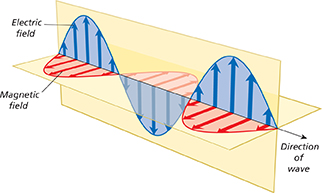Figure 2 Electromagnetic waves consist of changing electric fields and magnetic fields. The fields are at right angles to each other and to the direction of the wave. Interpreting Diagrams How can you tell that electromagnetic waves are transverse waves?

What Are Electromagnetic Waves?
The visible and invisible waves you will learn about in this chapter exhibit some of the same behaviors as mechanical waves. Other behaviors are unique to electromagnetic waves. Electromagnetic waves are transverse waves consisting of changing electric fields and changing magnetic fields. Like mechanical waves, electromagnetic waves carry energy from place to place. Electromagnetic waves differ from mechanical waves in how they are produced and how they travel.
How They Are Produced
Electromagnetic waves are produced by constantly changing fields. An electric field in a region of space exerts electric forces on charged particles. Electric fields are produced by electrically charged particles and by changing magnetic fields. A magnetic field in a region of space produces magnetic forces. Magnetic fields are produced by magnets, by changing electric fields, and by vibrating charges.  Electromagnetic waves are produced when an electric charge vibrates or accelerates. Figure 2 shows that the fields are at right angles to each other. You can tell this is a transverse wave because the fields are also at right angles to the direction in which the wave travels.
Electromagnetic waves are produced when an electric charge vibrates or accelerates. Figure 2 shows that the fields are at right angles to each other. You can tell this is a transverse wave because the fields are also at right angles to the direction in which the wave travels.
How They Travel
Because changing electric fields produce changing magnetic fields, and changing magnetic fields produce changing electric fields, the fields regenerate each other. As the fields regenerate, their energy travels in the form of a wave. Unlike mechanical waves, electromagnetic waves do not need a medium.  Electromagnetic waves can travel through a vacuum, or empty space, as well as through matter. The transfer of energy by electromagnetic waves traveling through matter or across space is called electromagnetic radiation.
Electromagnetic waves can travel through a vacuum, or empty space, as well as through matter. The transfer of energy by electromagnetic waves traveling through matter or across space is called electromagnetic radiation.
What are electromagnetic waves?






